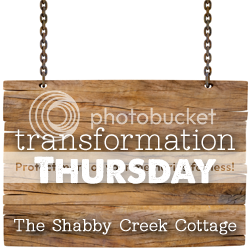Spring arrived early here, much like in the rest of the country, and I've had gardening on my mind ever since!
We still have lettuce, spinach, mustard greens (ick--can't stand 'em!), onions, and garlic in the raised beds in our backyard leftover from fall plantings. And until earlier this week, we also had two beds full of kale, which had bolted earlier in the month.
My husband usually takes the lead on our garden, but this year he said
he just wasn't feeling it, so since I most certainly want a summer
garden, it was up to me to get that ball rolling!
Jason takes a more relaxed approach to planting the garden, usually broadcasting seeds into the beds, waiting to see what comes up, then thinning and tending to the plants.
Well, I needed a bit more structure--or more like someone telling me what do--so I read Mel Bartholomew's
All New Square Foot Gardening. I quickly realized how simple, straightforward, and logical the system is, and decided that's how I'd plant and grow our summer garden.
Now, the basic tenets of SFG are:
-forgetting all you've been taught about planting gardens in rows--that systems works for producing food on a very large scale; home gardens needn't take up nearly as much space
-building raised beds in dimensions of 4 feet (ex: 4'x4' {the ideal} or 4'x8', etc.)
-filling the beds with a mix of compost, top soil, and vermiculite to minimize weeds and ensure quality soil
-making grids to go on top of the beds to delineate each square foot
-planting seeds and/or seedlings densely in each square foot block
-maximizing the amount of food grown in a small area of square footage
Mel gives guidelines on how many plants to grow in a given square foot, based on the mature plant size. For instance, a single tomato plant encompasses 1 sq. ft., while 9 beets can be planted in the same amount of space.
He also states that by using the SFG system, one adult can harvest enough food from three 4'x4' beds (48 sq. ft.) to eat a salad and have dinner vegetables every day of the growing season, plus have enough extra produce to preserve and put up as well. Pretty impressive, huh?
Our large beds--of which there are 8--are 5'x10' and constructed of 2x12s, so they were workable enough for the SFG system.
Since building them in 2010, we originally filled them with a compost/topsoil mix, and then amended the beds with more of the same mix last year, plus leaves, grass clippings, and some horse manure compost from a neighbor.
For this project, I decided to start small(ish) as Mel recommends and convert the two beds of bolted kale to square foot garden beds. As the spinach and lettuces and greens wilt with the heat, I'll clean out those beds and convert some of them to the SFG system. I may leave a few beds alone and use them for more sprawling plants like watermelon and pumpkins since we have the space, though you can technically grow them semi-vertically with the SFG system!
Anway, here's one of the beds of kale.
I ripped all that out:
Took a 4 cu. ft. bag of vermiculite:
And emptied the contents into the bed and worked it into the soil:
 |
| The vermiculite prevents the soil from compacting and allows for better drainage |
Now, the official way to do the SFG grid is to use wood lathe and make a permanent grid to lay on top of the raised bed. After looking into several options at the local home improvement stores, we'd either have to spend a bundle on wood lathe long enough to span the 10' beds, or buy a table saw and rip 2x4s into thin strips of lathe, which isn't exactly the safest thing to do.
(This is where if you make your beds the recommended 4'x4' dimension, you can get lathe in 4' lengths for a cheap price. Plus, a 4'x4' bed is easy for most people to reach in from all sides--another reason why Mel recommends those magic dimensions.)
Anyway, in the name of thrift (and instant gratification), I went against Mel's advice of building the wood grids. I already had 5,000 feet of baling twine and plenty of screws on hand. And even if I have to replace the twine next year, I figure I'd rather use what I already have first than spend any money. Plus, I could make a grid of twine without any assistance and get it done quickly.
So I marked off each foot around the perimeters of the beds and placed the screws:
Then I took lengths of twine and tied them off, first along the 10 ft. lengths:
And then across:
 |
| The OCD/anal retentive part of me is totally loving all those neat little grids! |
And tah-dah, Square Foot Gardening beds!
My son and I planted the beds today, but it's dinner time now so I'll be back in the next few days to give a quick rundown of what we've planted so far.
Do you use the SFG method? Have you been working in your garden yet? What have you planted?
-Erin




































